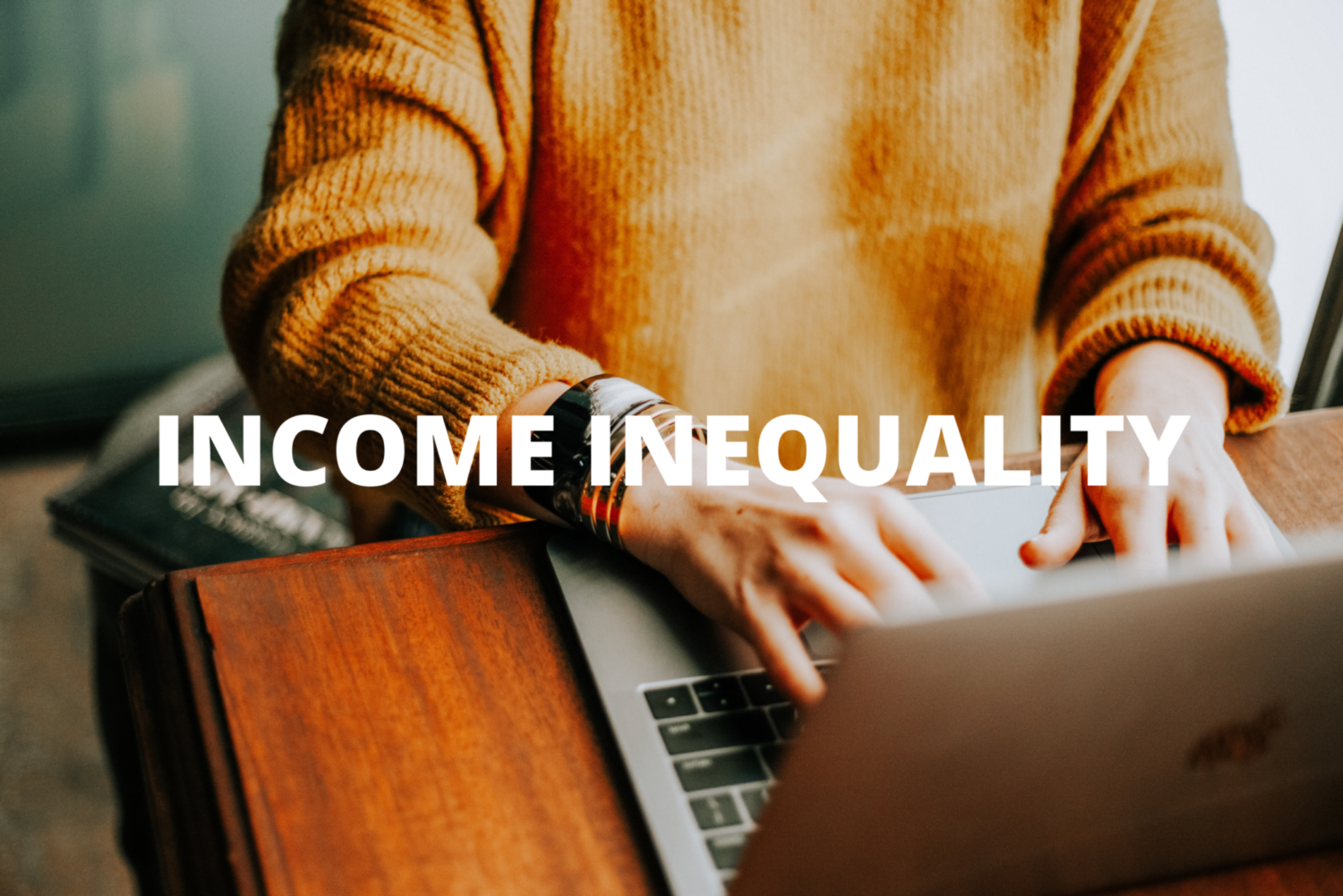We’ve learned a lot over the past year: how to work from home, the best way to make bread, and even how inequitable our economy is.
The COVID-19 pandemic revealed and exacerbated inequality around the world. This month, we’re exploring what income inequality looks like in the US, from the pandemic to wage gaps. We’ll also explore potential solutions and shifts to create a better economy for all Americans.
What is Income Inequality?
Income Inequality is the extent to which income within a population is unevenly or unfairly distributed. In America, there are disparities between different groups of people in regard to issues such as quality of life, working opportunities, housing, and more. This is mainly due to disparities in salary and how certain groups are paid for their labor. These differences in socioeconomic status result from incongruities in salaries and wages.
Income inequality within a population is often analyzed with the Gini Coefficient. The Gini Coefficient measures a population’s distribution of income. Values are on a scale of zero to one. Zero represents zero percent inequality (perfect equality) while one represents 100 percent inequality (perfect inequality). This coefficient is also used to measure wealth inequality, not just income inequality. For example, the 2021 Gini Coefficient for wealth inequality in the US is 0.852, while its 2021 Gini Coefficient for income inequality is 0.480.
What is Wealth Inequality?
Is there a difference between income inequality and wealth inequality? Are they connected?
Income is the amount you earn in a year in terms of salary and investment returns, while wealth represents an individual’s total net worth. Income inequality is largely rooted in wealth inequality; unequal accumulation of wealth has considerable effects on income inequality. The reason for focusing on income inequality as opposed to wealth inequality is that income inequality involves less complex factors. This makes it easier to clearly analyze the issues that cause this inequality.
Current Income Gap in the US
Income gaps a prevalent issue in America, as income disparities are so pronounced that the top 10 percent of America’s population average more than nine times in income than the bottom 90 percent. This does not compare, however, to the difference in average income between the top one percent and bottom 99 percent (39 times more income), or even the divide between the top 0.1 percent and bottom 99.9 percent (196 times more income).
History of Income Inequality in the US
The US income divide was not always so extreme. In the early 1900s, social movements like labor unions, alliances like Grangers and Farmers’ Alliances, and progressive policy makers utilized tax reforms such as an income tax to successfully narrow the gap in the population’s income. In fact, America’s current income tax was first introduced in 1913 with the goal of bringing equity and fairness to the American economy.
However, these systems regulating income inequality began to break down and America returned to its downwards and extreme trends of inequality from the 1970s onwards. This income tax that was touted to bring further income equality was one of the first policy-based steps taken to bridge the gap. However, in reality it proved to do little for leveling the economic playing field because it did little to redistribute wealth. The income tax did bring more equity in that the rich weren’t given tax exemptions because of their wealth and were now obliged to contribute to government revenues.
What Causes Income Inequality?
Tax policy is incredibly important to any country and has a considerable effect on levels of income inequality. Tax structures affect both the short-term and long-term statuses of economic growth and government revenue.
Another important factor is unemployment. This is a major variable as it has a near direct effect on the increase/decrease of income inequality and lowers the labor force’s overall participation percentage.
Globalization boosted the rise of America as an international superpower. However, this comes at a price as American corporations have outsourced jobs overseas, and the number of jobs for working- and middle-class Americans has decreased. Not only this, international trade favors more highly educated workers as opposed to those with less education.
In an era of technological innovation and rising artificial intelligence, increased automation within the workforce is inevitable. However, technological advances have led to the replacement of people with automation and the encouragement of aforementioned globalization trends.
Unions are a core aspect of America’s blue-collar workforce and are proven to do much to bridge income and wealth gaps. It is for this reason that the recent decline of unions has led to a myriad of other issues. For example, a large percent of factory jobs disappeared (which include a majority of high-paying union jobs), deregulation occurred, and increase of “right to work” practices decreased the amount of active unions as well as their protections for American workers.
Racial and gender wage gaps are major contributors to income inequality. Women still earn 82 cents to every dollar earned by a man and some minorities earn as low as 69 cents to every dollar earned by a non-POC. These disparities have real repercussions for income inequality in America.
These causes, if left unaddressed, will continue to perpetuate a cycle of poverty and inequality for the majority and wealth for the few.
Look for our first podcast episode of this month’s series on Wednesday!
- How Does Globalization Affect Income Inequality in the US? - September 27, 2021
- How a Decline in Unions Contributes to Income Inequality - September 23, 2021
- The Big Three: Exploring Wage Gaps in the US - September 13, 2021
